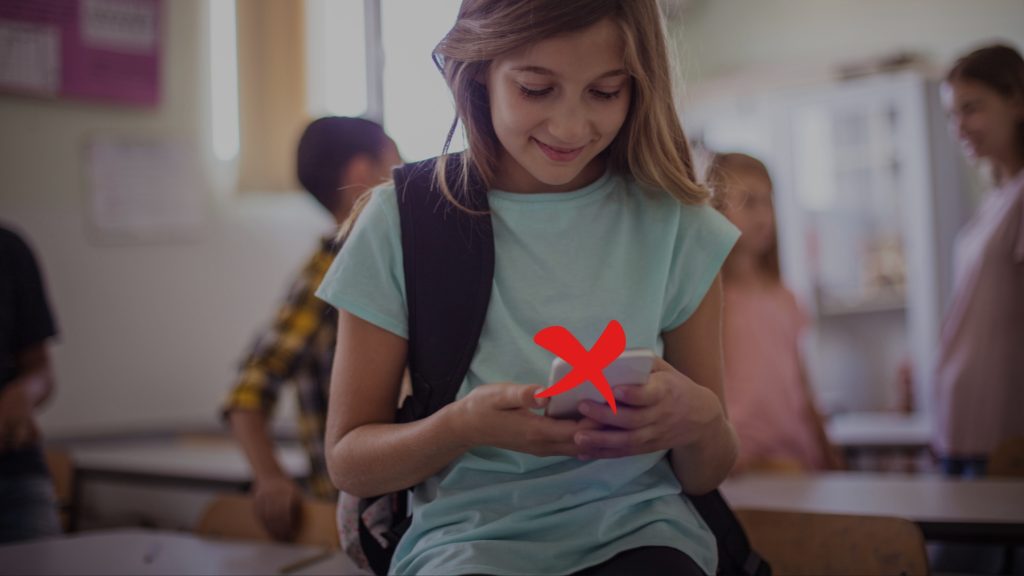
Los Angeles’ school board is working on a “no cell phones” policy to enforce by January 2025.
- They hope to protect kids from distractions and social media.
- They’ll be taking into consideration ages and possible disabilities.
On June 18th, the Los Angeles Unified School District Board of Education voted to prohibit cell phone use in schools, triggering questions about communications during emergencies.
For most adults, specifically millennials and early Gen Zers, “no cell phones at school” was the norm. But as cell phones became less of a luxury and slowly morphed into a necessity, students started taking them everywhere, including in schools, much to teachers’ dismay. In turn, parents became dependent on these devices to remain in contact with their young ones, especially during emergencies, be they individual or school-wide. However, gradually, school districts have taken it upon themselves to remedy the presence of phones on campus, helping counter its impact.
No Cell Phones in Schools
To mitigate the negative impact of smartphones during school hours, the Los Angeles school board voted to develop a “no cell phones and social media platforms” policy within 120 days. The Board also acknowledges that there are several things to consider when developing a cohesive and effective policy. The list includes devices other than cell phones, where the phone goes (pouches or lockers), and exceptions for students’ age, and possible physical and/or mental disability.
They seek to heal what the dependency on mobiles in schools has damaged. And schools banning cell phones in schools is the way to go. A 2016 study, Ill Communication: Technology, distraction & student performance, backs up their plan. The researchers found that “student performance in high stakes exams significantly increases post [cell phone] ban, by about 0.07 standard deviations on average.”
Not as Helpful
Many advocates against cell phones in schools admit that technology gave students access to a wealth of information we never thought possible before. However, they also point out that the presence of phones in class and around campus interfered with students’ attention and learning. Beyond this, cell phones in schools also make cheating and cyberbullying easy. Not to mention, that the gap between rich kids and poor kids becomes obvious when looking at the type of devices that they carry.
One item that they seem to have yet to discuss is emergencies and parents. Many parents admit that cell phones have changed their kids, sometimes for the worse, but they often find themselves incapable of setting boundaries around the use of cell phones in schools and at home. With how vast the world has become after opening ourselves up to the World Wide Web, parents are constantly worried about what their children are up to and find themselves unable to give up the secure direct line with their young.
But What if There’s an Emergency?
This is a sensitive topic, especially in the U.S. where, unfortunately, school shootings are a common tragic occurrence. There have been incidents over the years where students sought reassurance from their parents during those difficult times.
In 2013, during the Arapahoe High School shooting, several students reached out via cell phones to their parents letting them know they were okay. Not only that but also the students informed one another of what was going on campus with one student admitting that they thought it was a drill until the text messages started going in. One parent was grateful for the phones as the updates regarding the students’ welfare allowed the parents to stay calm and patient.
It is worth noting that the National School Safety and Security Services advised against cell phones as they may hinder school safety. In an emergency, a “no cell phones” policy ensures that students focus solely on safety and emergency response directions being given by school staff. However, they also note the importance of keeping up with the times and the integration of technology into students’ learning experiences. Schools need to take advantage of this and facilitate student communications about school safety concerns with administrators, SROs, school security, counselors, and others.
The “no cell phones in schools” issue is not as black and white as some people may seem to think it is.
Inside Telecom provides you with an extensive list of content covering all aspects of the tech industry. Keep an eye on our Community section to stay informed and up-to-date with our daily articles.